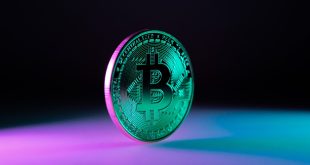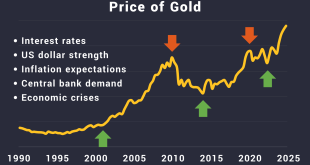Is gold jewelry a good investment? The allure of glittering necklaces, bangles, and rings can be strong, especially when touted as a safe haven for your money. But before you rush out to convert your savings into shimmering assets, let’s delve into the real value of gold jewelry and uncover the hidden costs and complexities often overlooked by sellers. Is that ₹67,000 (approximately $800 USD) piece truly a solid investment, or is there more to the story than meets the eye?
Understanding the Appeal of Gold Jewelry
Gold’s Enduring Value
Gold has always held a certain mystique, hasn’t it? Throughout history, it’s been used as currency, a symbol of power, and a store of wealth. Even in times of economic uncertainty, people often flock to gold, driving up its price. This perception of stability is a major reason why gold jewelry seems like a solid investment. It’s tangible, it’s pretty, and it’s supposed to hold its value. At least, that’s the idea.
Emotional and Aesthetic Value
Let’s be real, gold jewelry isn’t just about cold, hard cash. It’s about how it makes you feel. That stunning necklace might remind you of a special occasion, or that ring might be a family heirloom passed down through generations. These emotional connections add a layer of value that’s hard to quantify. Plus, let’s not forget the aesthetic appeal. A well-chosen piece of gold jewelry can elevate your look and make you feel confident and stylish. But does that translate into a smart financial decision? Maybe not always…
The Hidden Costs: Beyond the Spot Price
Making Charges and Wastage
Here’s where things get a bit tricky. When you buy gold jewelry, you’re not just paying for the gold itself. You’re also paying for the “making charges,” which cover the artisan’s labor and the design. These charges can significantly inflate the price, sometimes adding 10-25% or even more to the cost. And then there’s the “wastage,” which accounts for the gold lost during the manufacturing process. These hidden costs eat into your potential returns, making that ₹67,000 piece less of a sure thing.
Purity and Hallmarking
Not all that glitters is 24-karat gold! The purity of gold jewelry varies, and it’s crucial to know what you’re buying. 24-karat gold is pure gold, but it’s too soft for jewelry making. That’s why gold is often mixed with other metals to increase its durability. The lower the karat, the less actual gold there is in the piece. Also, look for hallmarking, which is an official certification of the gold’s purity. In India, the Bureau of Indian Standards (BIS) hallmark is a good sign. Without it, you’re taking a risk.
Resale Value and Liquidity
So, you’ve bought your gold jewelry, enjoyed wearing it, and now you want to sell it. This is where reality can bite. The resale value of gold jewelry is often significantly lower than what you paid for it. Jewelers will typically only pay you for the gold content, deducting making charges, wastage, and any other associated costs. Plus, finding a buyer willing to pay a fair price can be a challenge. Unlike stocks or bonds, gold jewelry isn’t exactly a liquid asset. It can take time and effort to convert it back into cash.
Gold Jewelry vs. Other Gold Investments
Gold Bullion (Bars and Coins)
If you’re serious about investing in gold, bullion (bars and coins) might be a better option. Bullion typically has lower making charges and a higher gold content than jewelry. You’re essentially paying for the gold itself, rather than the artistry. Of course, you won’t be able to wear a gold bar around your neck (though, that would be a statement!), but from an investment perspective, it’s often a more efficient way to own gold.
Gold ETFs and Mutual Funds
For those who prefer a more hands-off approach, Gold ETFs (Exchange Traded Funds) and mutual funds offer a way to invest in gold without physically owning it. These financial instruments track the price of gold, allowing you to participate in the gold market without the hassle of storage or security. Plus, they’re generally more liquid than gold jewelry, making it easier to buy and sell.
Sovereign Gold Bonds
Issued by the Reserve Bank of India (RBI), Sovereign Gold Bonds (SGBs) are another popular option for investing in gold. These bonds offer a fixed interest rate in addition to the potential appreciation in gold prices. They’re also held in dematerialized form, eliminating the risk of theft or damage. And the interest earned is taxable, which is something to keep in mind.
Factors Affecting Gold Prices in India
Global Economic Conditions
Gold prices are influenced by a whole host of global economic factors. During times of economic uncertainty, such as recessions or geopolitical tensions, investors often flock to gold as a safe haven, driving up prices. Conversely, when the economy is booming, and other investment options look more attractive, gold prices may decline.
Currency Fluctuations (USD/INR)
Since gold is typically priced in US dollars, currency fluctuations can have a significant impact on gold prices in India. A weaker Indian rupee (INR) against the US dollar (USD) makes gold more expensive for Indian buyers, while a stronger rupee makes it cheaper. Keeping an eye on the USD/INR exchange rate is crucial for understanding gold price movements.
Domestic Demand and Supply
Like any commodity, gold prices are also influenced by domestic demand and supply. India is one of the largest consumers of gold in the world, particularly during festivals and wedding seasons. High demand can push prices up, while an oversupply can lead to a decline. Government policies on gold imports and taxes also play a role.
The ₹67,000 Question: Making an Informed Decision
Calculating Potential Returns
Before you drop ₹67,000 on that gold necklace, take a moment to crunch the numbers. Consider the making charges, wastage, and potential resale value. Factor in the prevailing gold prices and your expectations for future price movements. Don’t just rely on the jeweler’s sales pitch; do your own research and calculate your potential returns. It might surprise you.
Diversification and Risk Management
Investing in gold jewelry shouldn’t be your only investment strategy. It’s essential to diversify your portfolio across different asset classes, such as stocks, bonds, and real estate. This helps to mitigate risk and ensures that you’re not overly reliant on the performance of a single asset. Remember, putting all your eggs in one golden basket can be risky.
When Gold Jewelry Might Make Sense
Okay, so is there ever a time when gold jewelry makes sense as an investment? Well, if you’re primarily buying it for its emotional or aesthetic value, and you understand the potential financial downsides, then go for it! Just don’t expect it to be a high-yielding investment. Think of it as a beautiful, wearable asset that might hold its value over time, but probably won’t make you rich.
So, is gold jewelry a good investment? It’s complicated. It’s not as straightforward as some might have you believe. It’s a mix of emotion, aesthetics, and a bit of financial reality. Take your time, do your homework, and make a decision that aligns with your financial goals and personal preferences. And hey, if you do decide to buy that ₹67,000 piece, at least you’ll be doing it with your eyes wide open. Maybe you should share your experiences, too. I’m curious to know what other people think about this.
 seeme
seeme



